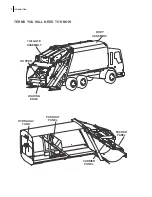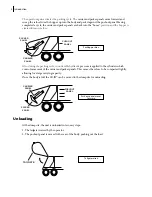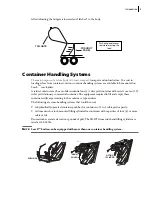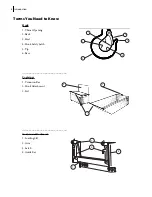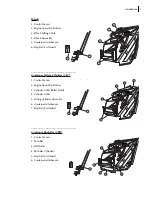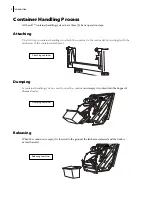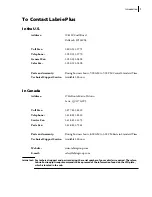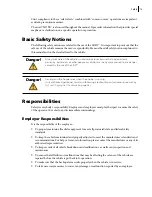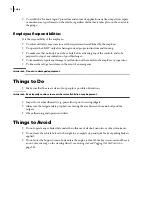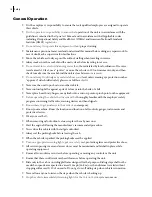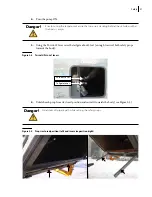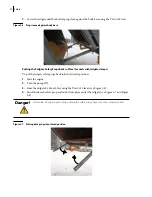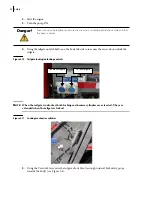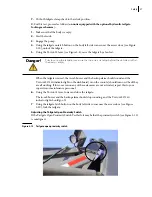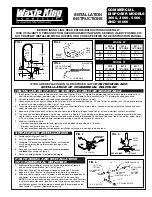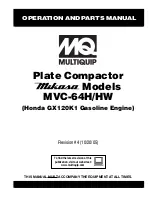
16 Safety
General Operation
It is the employer’s responsibility to ensure that
only
qualified employees are assigned to operate
this vehicle.
It is the operator’s responsibility to ensure that
operation of the unit is in accordance with the
guidelines contained in the
Operator’s Manual
and in accordance with all applicable codes
including Occupational Safety and Health Act (OSHA) and American National Standards
Institute (ANSI)
regulations.
Do not attempt to operate this equipment without
proper training.
Maintenance personnel must read and understand this manual before doing any repair work. In
case of doubt, ask a supervisor for clarifications.
Move the vehicle as slowly as possible without stalling when traveling in reverse.
Always make sure the area behind the unit is clear before traveling in reverse.
Do not travel in reverse for distances greater than
those dictated by local ordinances. If reverse
travel exceeds 10
feet, use a “spotter” or move the vehicle in 10
foot increments only, and then
check to make sure the area behind the unit is clear between
increments.
Do not attempt to dislodge any material above waist
level unless wearing eye protection such as
“approved” side shielded safety glasses or a full face
shield.
Never use the unit to push or tow another vehicle.
Never unload uphill or against a pile of refuse or into the bank of a hill.
Never place head, body, fingers or any limbs into a scissors point or pinch point on the equipment.
Before operating the vehicle the driver must be
thoroughly familiar with the employer’s safety
program concerning traffic rules, warning devices and hand signals.
Know where to get assistance in the event of an
emergency.
Know your machine. Know the location and function of all controls, gauges, instruments and
protective devices.
Wear your seat belt.
When removing nylon locknuts,
always
replace them by new ones.
Start the engine following the manufacturer’s recommended procedure.
Never
drive this vehicle with the tailgate unlocked.
Always set the parking brake before leaving the cab.
When the vehicle is parked, the parking brake
must
be applied.
Turn on appropriate warning lights, put on a safety
vest, protective glasses and protective shoes.
All service opening covers and access doors must be maintained and latched in place while
operating equipment.
Ensure all co-workers are in view before operating or moving any controls or the unit.
Ensure that there is sufficient overhead clearance before operating the unit.
Ride only in the cab or on riding platforms designed for that purpose. Riding steps shall not be
used when speeds are expected to exceed 10
mph
(16
km) or when distance traveled without
stopping will exceed 2/10 of one mile. Do not get on/off riding step when vehicle is in motion.
Never allow anyone to ride on the steps when the vehicle is backing up.
Stop the vehicle immediately if warning lights for the
TAILGATE AJAR
system come on.
Содержание 2R-III
Страница 1: ...2R III MAINTENANCE MANUAL...
Страница 2: ......
Страница 3: ...2R III MAINTENANCE MANUAL...
Страница 5: ......
Страница 6: ......
Страница 20: ...10 Introduction...
Страница 42: ...32 Safety...
Страница 58: ...48 Preventive Maintenance Figure 5 1 Hydraulic tank w return filter 1 2 3 4 5 6 7 8...
Страница 66: ...56 Preventive Maintenance...
Страница 102: ...92 Troubleshooting...

